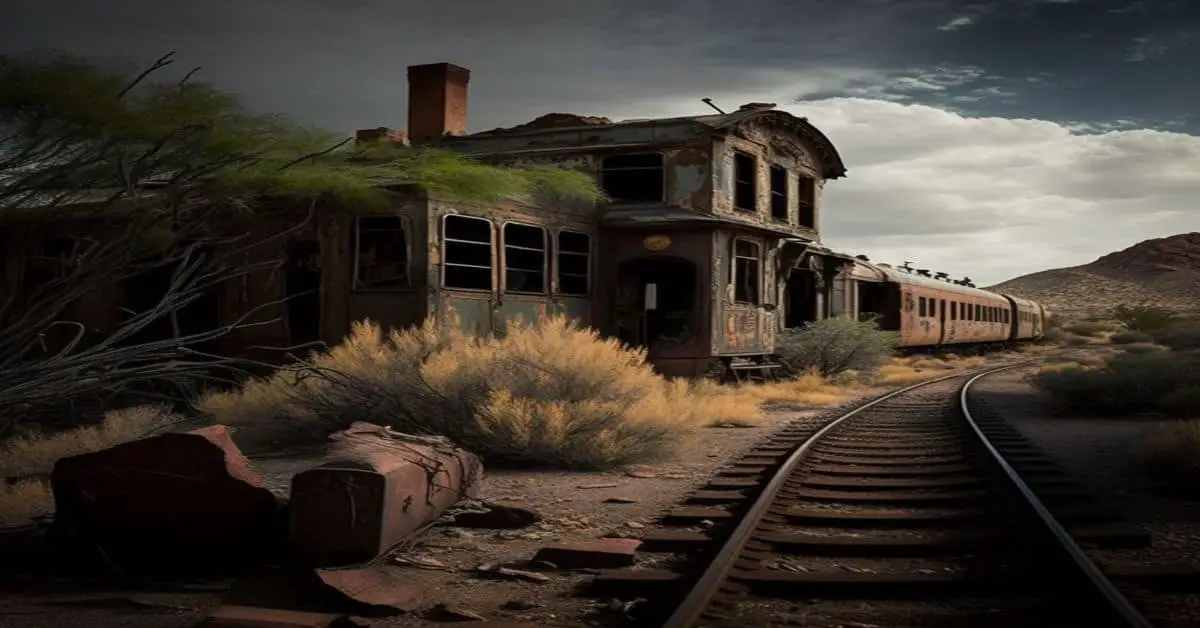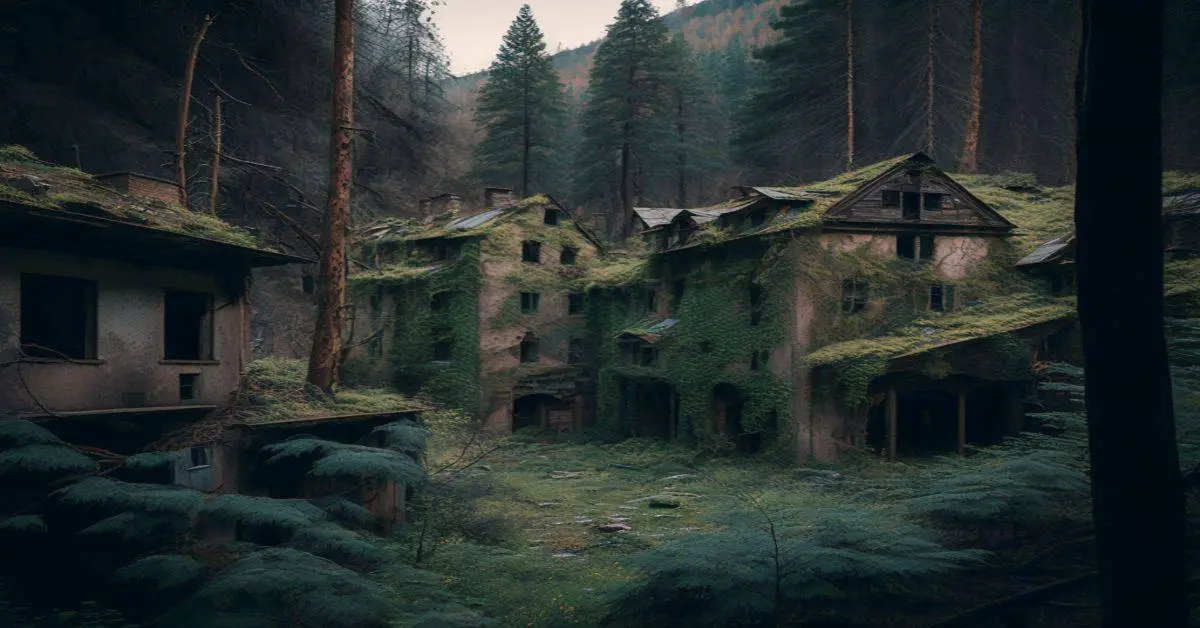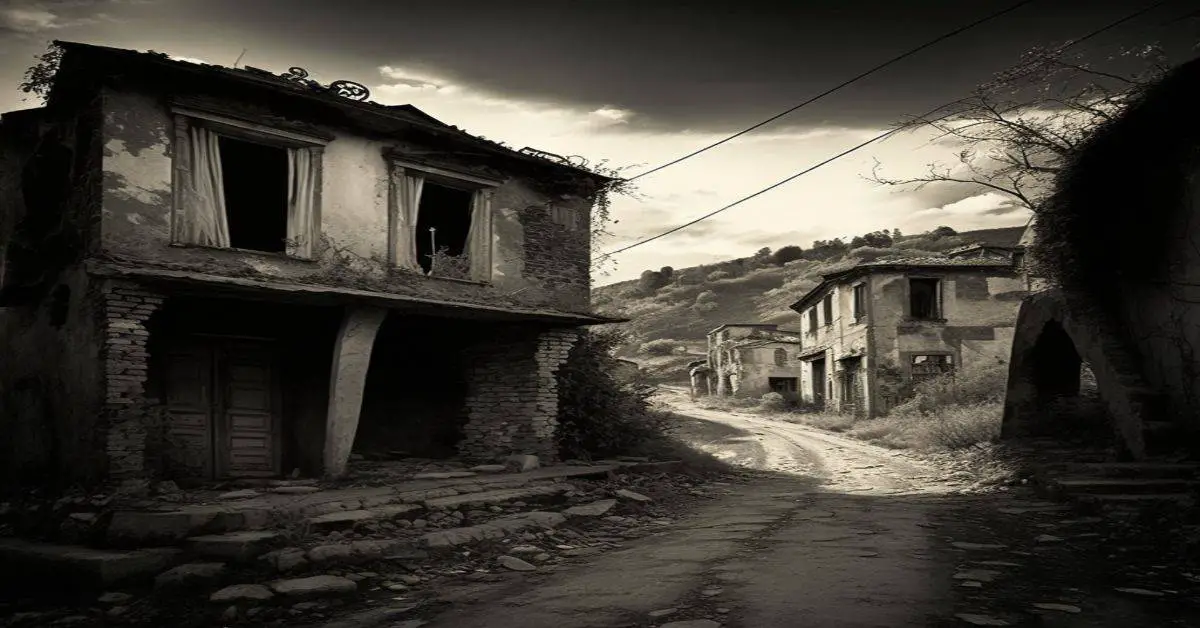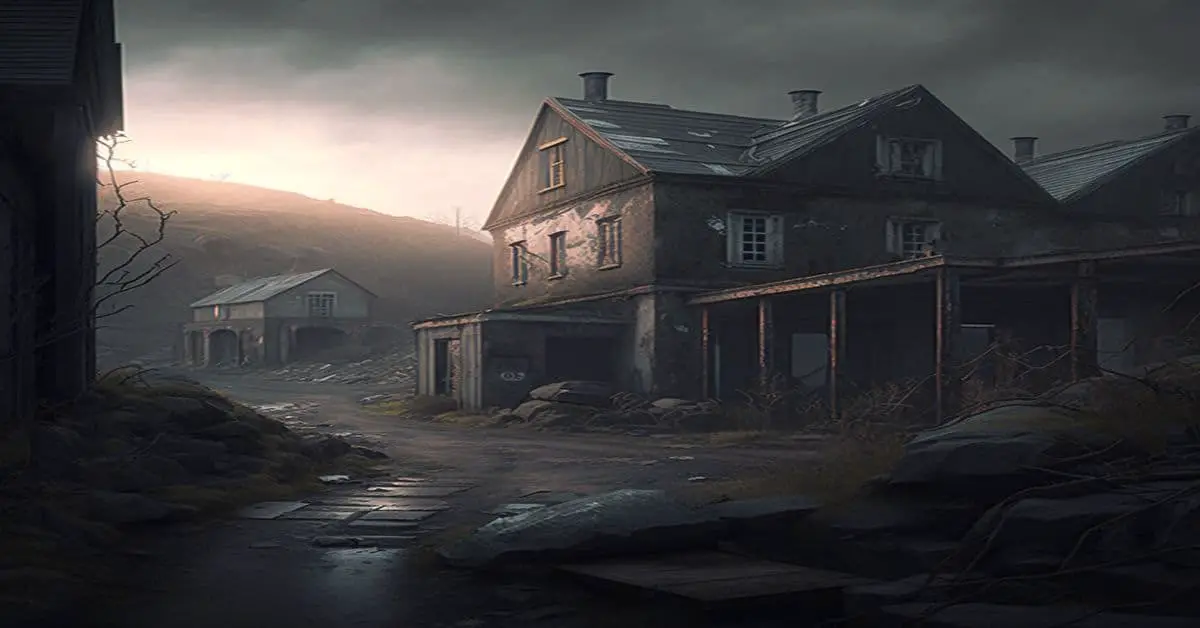Thousands upon thousands of ghost towns are scattered across America and worldwide. While some have been preserved for tourism, others remain untouched by time.
These are some of the more exciting ghost towns you can visit today. Some are located near large metropolitan areas, while others are on the outskirts of the civilized world.
Pine Barrens, New Jersey
Pine Barrens stretches across seven counties in northeastern New Jersey. The Barrens cover an enormous amount of territory (roughly 2,000 square miles), making up part of the largest contiguous forest east of the Mississippi River.
During colonial times, these lands were used primarily for farming. Still, later, when the Industrial Revolution began to take off in earnest, they became one of the most thriving industrial hubs in the United States. The Industrial Revolution led to tremendous growth in population throughout the region, which eventually turned into a bustling commercial center known as Camden.
In the 19th century, however, things started to change. Railroads came through the area, bringing massive amounts of people from all over the country looking to work at the factories that sprang up along their routes. By the turn of the 20th century, Camden’s population had grown tenfold, and its economy shifted from agriculture to manufacturing and industry.
Unfortunately, many of those industries left town shortly after World War II, leaving behind empty shells of buildings where once there were bustling communities full of men ready to return to work. Today, much of the area remains abandoned, slowly decaying while nature reclaims everything else.
Thurmond, West Virginia
The Dun Glen Hotel is located on the C&O Railroad tracks in Thurmond, West Virginia. It first opened its doors in 1881 as part of an effort by local businessman John W. Scott to bring economic prosperity to his hometown. In 1902, the hotel began hosting regular poker games that became so popular that they continued long past their scheduled end time.
According to legend, one player kept winning for 16 straight hours before closing. This man was said to have won $50,000 from fellow players during that game alone, making him the wealthiest person in the entire state—no word on whether or not he ever collected, though.
In 1930, the hotel caught fire and burned to the ground, destroying nearly all of the building except the lobby. Afterward, it remained vacant until 1934, when it reopened under new ownership and again served as a gambling hall. The poker room stayed intact, and rumors say that people still play cards now and then.
Today, you can visit the ruins of the old hotel and see how far it has fallen into disrepair since its glory days. You’ll also be able to explore some of the other abandoned buildings around the site, including several homes and businesses.
If you’re looking for something more adventurous, you might want to check out the nearby Pine Barrens National Park. Over 2,500 acres of untouched wilderness are filled with wild animals like black bears, bobcats, foxes, deer, and coyotes. So if you’re up for hiking through the woods, exploring caves, and taking pictures of wildlife, head to the Pine Barrens!
Kennecott, Alaska
Located in south-central Alaska, Kennecott was one of the world’s largest producers of copper during the Great Depression. It made enough money from its mines to pay dividends yearly until 1980.
In 1929, Kennecott shut down operations at its Kennecott Mines due to a lack of demand for copper. This immediately impacted the economy because the company employed about 1,000 people who lost their jobs. Many of these miners moved away from Kennecott, but others decided to stay despite not having any income.
It wasn’t until 1982 that the last remaining employee finally retired. Now, the old smelter building has become a museum dedicated to the history of the Kennecott Copper Corporation. As a result, Kennecott became known as “the ghost town that wouldn’t die.”
Today, Kennecott is preserved as a National Historic Landmark thanks to the efforts of the National Park Service.
St. Elmo, Colorado
In the late 1800s, miners flocked to the Sawatch Range in central Colorado, hoping to strike it rich. One such man was Frank Gibbard, who had been working at a mine near Leadville before starting his operation along the St. Elmo River on the western slopes of Mount Elbert.
Gibbard built a small shack and began prospecting for gold and silver ore. After finding some promising deposits, he set up shop and called his new town “St. Elmo” because of its location between two mountain peaks that looked similar to St. Elmo’s headgear.
In 1892, Gibbard struck it big–his mine produced nearly $1 million worth of gold and silver within one year alone. This made him quite wealthy, which led to an influx of people moving into the tiny town. By 1896, St. Elmo boasted a general store, a telegraph office, hotels, a town hall, a newspaper office, and a schoolhouse.
The town boomed until 1900, when another mining boom hit the area. At first, things went well, but eventually, the price of silver plummeted, and production dwindled to nothing. Many of Gibbard’s employees lost their jobs and moved away, leaving behind only a few miners trying to scrape together enough money to survive.
By 1902, most residents had given up and left the town. That same year, Gibbard died from tuberculosis at age 49. His wife sold off all of his property except four acres around the original mine site, which she used to build a house for herself.
Following her husband’s death, Mrs. Gibbard struggled to make ends meet. She tried selling the land surrounding the old mine, but no one wanted to buy it. So instead, she leased it out to local farmers who planted crops on the ground. Unfortunately, they couldn’t grow anything profitable, so they gave up and returned the land to Mrs. Gibbard.
In 1907, the United States Postal Service established a branch in St. Elmo. Two years later, however, the postmaster died, and the government cut ties with the town altogether.
That same year, the railroad came to town and started running trains through St. Elmo every day. But without a proper depot, the train cars would have to wait outside town until someone could be found to take them inside. Eventually, a resident named Ben Gibbard offered to rent space in his home as a temporary station.
Unfortunately, Mr. Gibbard never got paid for renting the space, and soon afterward, he disappeared. No one ever saw him again.
After that, St. Elmo continued to decline. Most buildings fell apart, and the only ones still standing today are the church, the cemetery, and the schoolhouse. These days, the town sits mostly deserted except for a few locals living there.
If you’d like to explore St. Elmo, you can head north toward Buena Vista Heritage State Park. Stop by the visitor center in Buena Vista and ask staff about guided ghost town tours.
Bannack, Montana
In July 1862, John S. Jones discovered a vast gold deposit on his property near the Clark Fork River and Bannack Creek confluence. This find turned into one of the most significant gold strikes in Montana history, and within just under two years, the town built around it had grown from nothing to over 3,000 people.
Unfortunately, that growth didn’t last very long — when the gold ran out, the town quickly started to wither away, eventually shrinking to only a few hundred permanent residents by the late 1960s.
Nowadays, all that remains of Bannack are some crumbling ruins, a cemetery, and a handful of old cabins scattered throughout the surrounding hills. But during Halloween, locals still hold an annual “bannock day” festival at which they dress up in period costumes and lead groups of tourists through the old town (which has been restored), showing them what life was like back in the 1800s.
Bodie, California
At one point, Bodie was one of the wealthiest towns in America, but things turned sour when it became known as the “most lawless” mining town on earth. At its peak, Main Street was lined with 65 saloons and “houses of ill repute,” making it easy for anyone to find whatever they wanted – including opium dens, brothels, and gambling halls. It wasn’t long before people started dying from alcohol-related illnesses, and eventually, the townspeople realized they had made a colossal mistake.
Today, only a few old buildings remain standing, showing Bodie’s appearance before the town officially declined.
Rhyolite, Nevada
In 1906, the Bullfrog Hills region of northern Nevada became home to one of the most famous mining camps ever built. Located on the banks of the Bullfrog River, the town of Rhyolite had everything anyone could need – including a stock exchange, three newspapers, two electric plants, public swimming pools, and two railroad depots. It also boasted dozens of hotels, saloons, and restaurants serving delicious food and alcoholic beverages.
But despite its impressive amenities, things weren’t always rosy for the townspeople. As mining operations expanded, the number of miners increased exponentially, leading to overcrowding and frequent fights between residents. In addition, the mines themselves required constant maintenance, meaning laborers needed to travel great distances to earn enough money to survive.
All these factors eventually led to a decline in the town’s popularity. Despite this, people continued to come to the city hoping to strike gold, earning it the nickname “Gold Capital of the World.” However, the town began to collapse almost completely when no new deposits were found. By 1930, less than 1 percent of the original population remained.
Rhyolite is a pile of rubble today, but visitors can see it firsthand by riding the Bullfrog Gold Mine Railroad. You’ll board a train at the nearby town of Bullfrog and ride it south along the river until you reach the old mine site. You’ll climb down the mountainside from there, exploring tunnels and underground chambers as you go. If you plan to take this tour, bring plenty of water and wear sturdy shoes – the trail is steep and uneven.
Terlingua, Texas
Terlingua, Texas, was one of the most popular places to party and experience the nightlife for decades. Terlingua got its name from the French word for merrymaking. It’s also known as the “Carnival Capital of the Southwest” because people from around the globe flock to the tiny desert oasis every January to celebrate Mardi Gras.
After the mines started shutting down in the early 1950s, residents had no choice but to move away and find new jobs elsewhere. Since then, the town has become little more than a ghost town. Today, it’s hard to imagine anything less festive than these barren, windswept mountains.
While you won’t find any bars or nightclubs here anymore, you will find a handful of historic buildings that have survived the years since the mines closed. These include the Terlingua Trading Post, the Terlingua Hotel, and the Terlingua Historical Society building.
After exploring the deserted city, grab a bite to eat at the Terlingua Cafe and Grill – the best thing about eating at this restaurant isn’t the food but rather the incredible view overlooking the valley below. Enjoy your meal while watching the sunset over the mountains, and don’t forget to order dessert!
Santa Claus, Arizona
In the late 1930s, Nina Talbot and her husband relocated from California to Arizona. Nina was a successful real estate agent in California and had a grand idea of using an 80-acre plot in Arizona to gain a potential buyer’s interest in the desert land she was trying to market in a desert location.
Santa Claus, Arizona, was established approximately 14 miles northwest of Kingman and designed to resemble Santa’s workshop at the North Pole. There was a hired Santa Claus to remain in the small community for children to meet and see preparing for the upcoming Christmas. The post office was successful year-round, receiving hundreds of letters with Christmas wishes and requests.
Guest houses had names such as Santa Claus Inn, Cinderella’s Doll House, and other Christmas-related titles. For 12 years, the town was very prosperous for Nina.
Between the 1950s and early 1970s, Santa Claus was mentioned in magazines and tourism brochures. Celebrities were known to have hosted holiday parties at the renamed Christmas Tree Inn. Located a few miles off Route 66, it was a popular spot to grab a bite to eat while enjoying the decorated scenery and festive attractions.
Nina’s hopes of selling the plotted land in the nearby area were never fulfilled, and the only people living there were those employed at Santa Claus. By the mid-1970s, the town’s success severely declined, and the establishment ultimately closed.
The property’s value suffered significantly with the city’s removal from state maps. Initially listed for sale at $95,000, the final sale price in 1988 was $52,000. In 1995, the town officially went out of business. In 2004, the few structures that remained were all that was left to try and locate the former community.
Flagstaff, Maine
One of the most famous landmarks in Flagstaff, Maine, is a tall wooden pole bearing the Stars and Stripes. This flagpole was erected in 1813 by Benedict Arnold and his troops when they set up camp near the town to defend against Native Americans. Over the years, the location became known as Arnold’s Point, and today it serves as a reminder of the importance of American independence.
Salton Riviera, California
In the late 1800s, the Salton Sea was just another desert lake. Then, people began building vacation homes around the shoreline, creating a thriving tourist destination called the Salton Riviera. Unfortunately, those days ended abruptly in the early 1900s when the Salton Sea suddenly started overflowing due to heavy rains. Thousands of people fled their homes, abandoning everything, including roads, businesses, houses, and cottages.
Although the Salton Sea dried up again within a few years, people never returned to the area. Instead, it remained utterly abandoned for several decades, growing increasingly desolate as time went on. Eventually, however, the land was reclaimed by Mother Nature, returning it to its original state of pristine beauty.
Today, the Salton Sea is one of the largest lakes in Southern California. It covers over 400 square miles and reaches depths up to 300 feet. It also contains salt deposits ranging from 70% to 90%, making it highly salty. Because of salt content, the waters have been polluted for decades, leading to severe health problems among the population living near the lake.
However, things could change soon. Researchers recently announced plans to build a $1 billion desalination plant beside the Salton Sea. Once complete, this facility will use advanced technology to turn seawater into drinking water, allowing the Salton Sea to become a much healthier ecosystem.
Ashcroft, Colorado
In 1870, a group of prospectors discovered rich veins of gold and silver just outside of Ashcroft, Colorado. Soon enough, the entire community fell under the spell of gold fever, and within ten years, the town had grown quite large. By 1890, the mines had dried up, leaving behind a massive crater where the city once stood.
Over the years, people continued to try their luck in the region, hoping to strike it rich again. Unfortunately, none of these attempts succeeded, and eventually, the town began to fade away. Nowadays, the only thing left of Ashcroft is the Ashcroft Lodge, which sits atop the old mining pit.
The lodge was first established in 1926 as a ski club called the Rocky Mountain Ski Club. A few years later, the lodge was expanded and renamed the Ashcroft Lodge, offering accommodations and dining facilities to members of the club.
In 1938, the lodge was sold to the Army Corps of Engineers, who planned to build a massive ski resort on top of the old mining pit. They hoped to attract wealthy travelers from around the country and offer skiing opportunities that no other resort in the area could match. Sadly, due to budget cuts and rising costs, the construction never got off the ground.
Although the lodge looks abandoned, it’s not entirely deserted. It’s currently owned by the United States Forest Service, which uses it as a basecamp for firefighting crews working across the forested mountainsides. Since the lodge doesn’t require electricity, firefighters can live inside without worrying about power outages disrupting their operations.
Cahawba, Alabama
Located outside Huntsville, Cahawba was the first state capital from 1820 through 1825. Unfortunately, due to seasonal flooding in the town caused by the two large rivers it sat between, many residents left, and the state legislature decided to move the capital in 1826. The city became a cotton trade center and was home to Castle Morgan prison during the Civil War, where Union soldiers were held as prisoners of war between 1863 and 1865.
Today, very little remains of either Cahawba or Castle Morgan Prison. All that’s left is a small graveyard containing the graves of several Confederate soldiers. Sadly, no one knows why these men chose to lie beneath the ground instead of being buried somewhere closer to home.
Although the prison is long gone, other remnants of Cahawba’s colorful history can still be found around town. One such example is the Cahawba Cotton Mill Ruins, located alongside the Tennessee River near downtown. These ruins date back to the late 1800s, and although they’ve fallen into disrepair over the years, they still provide valuable insight into the town’s former prosperity.
If you’re planning to visit Cahawba, check out the Cahawba Historical Society website. Here, you’ll find information on local events and attractions, including the Cahawba Battlefield State Historic Site, commemorating the Battle of Cahawba Creek that was fought on April 25, 1864.
Virginia City, Montana
In 1863, gold was discovered in the Black Hills region of South Dakota. Soon afterward, prospectors flocked to the area in search of riches. Unfortunately, the discovery didn’t last long. By 1865, almost everyone had moved on. Those who stayed behind quickly realized they needed help establishing a government for the territory. As such, representatives from several states gathered together to form the Territorial Legislature.
When the capital was finally established in Helena in 1864, Virginia City lost its status as the central hub of commerce in the state. That said, the town continued to thrive as a mining community well into the 20th century. Eventually, though, the decline began, and people started moving away. When the final residents left in 1963, the town officially became a ghost town.
Although many businesses disappeared, Virginia City managed to hang on until the 1990s, when the State of Montana purchased it. They then spent millions renovating the town, turning it into a tourist destination.
Elk Falls, Kansas
Elk Falls may sound like just another tiny village in Kansas, but it’s home to one of the world’s largest living ghost towns. During its peak, there were two stores, a dentist, a doctor’s office, and a drug store. Now Elk Falls is also known as the Outhouse Capital of the World.
According to locals, the reason why so many houses remained intact is simple: nobody wanted to move away. After all, no matter how bad your job is, you’ve got a roof over your head. Plus, the people who lived in Elk Falls didn’t need anything fancy. All they needed was somewhere to stay and a way to make money.
Today, Elk Falls is a popular tourist attraction, drawing hundreds of visitors each year. Visitors flock to the area to take advantage of the beautiful scenery and enjoy the various activities available such as hiking trails, fishing, swimming, horseback riding, and hunting.
If you’re interested in seeing the town, stop by the Elk Falls Chamber Of Commerce website. Here, you’ll find information on lodging options, restaurants, and other attractions in the area.
Although the town seems dead, it’s teeming with wildlife. Deer, foxes, hawks, owls, and eagles are common sights in the area, especially during the warmer months when the birds return to their nest. If you’re lucky enough to catch sight of one of these majestic creatures, snap a picture.
North Brother Island, New York
In 1858, the New York Department of Parks bought North Brother Island off Staten Island and turned it into a bird sanctuary. Unfortunately, the island wasn’t very successful as a bird sanctuary due to the location being on the East River between Queens and Brooklyn and easily accessible to residents and tourists going to Manhattan. Also, with no fresh water supply, it was challenging for the birds to survive.
Despite having difficulty keeping birds alive on the island, the government decided to keep trying. After buying another island just a mile away called South Brother Island, they constructed a large fence separating the two islands to prevent birds from flying between them. Despite this effort, however, both islands remained unoccupied.
Finally, in 1886, an entrepreneur named William Harnett decided to buy North Brother Island and make it habitable again.
Seattle Underground, Washington
Seattle was founded in 1792 by a group of immigrants led by Arthur A. Denny. As part of the original agreement, Denny promised to build a town on Elliott Bay, but he died before fulfilling his promise. His son John took over, creating a log cabin (which would eventually become Pioneer Square) and laying the foundation for the city. Unfortunately, John didn’t last long either, dying less than three years after arriving in Seattle.



